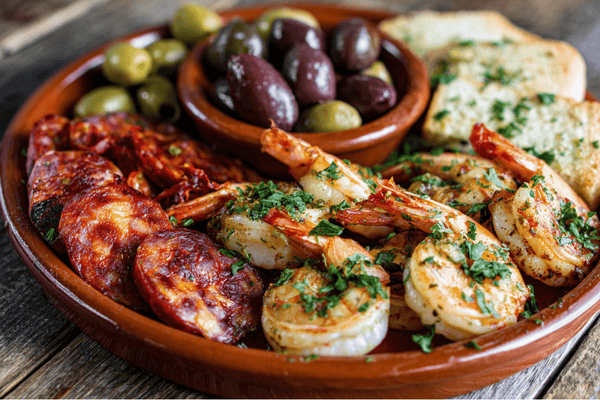 If you were asked to think of one Japanese dish that wasn’t sushi, what would you imagine? We bet a lot of you would say ramen! While there are conveniently packaged ramen kits available in supermarkets around the world, there’s nothing quite like making your own from scratch.
If you were asked to think of one Japanese dish that wasn’t sushi, what would you imagine? We bet a lot of you would say ramen! While there are conveniently packaged ramen kits available in supermarkets around the world, there’s nothing quite like making your own from scratch.It can seem a little daunting since there is quite a bit involved in making ramen and some people can be very picky about how it is made. But this shouldn’t put you off because once you’ve got it down to a T, ramen will become a staple dish in your home. When it’s done right, it’s like nothing else you will have ever experienced.
So, as part of our series 'A Taste of Japan', we are placing the spotlight on ramen today. Here, you will find out everything you have ever wanted to know about this delicious dish...
Table of contents
What Is Ramen?
In the simplest of terms, ramen is a bowl of noodle soup that is made using a strong broth. This is topped with a range of other ingredients and can be served both hot and cold. It’s great because there are so many variations on it suitable for those who want meat and fish, a vegetarian option and a broad range of flavours.Typically, the broth is prepared first before the other ingredients and noodles are added. In Japan, there is something of an accepted order when it comes to putting your ramen ingredients into the bowl.
You would normally begin by adding tare which is a type of dipping sauce that has various uses. This goes at the bottom of the bowl and because of how highly concentrated it is, you get a really good base flavour to your ramen soup.
Next comes the broth which Japanese people believe to be the soul of the dish. It gives the ramen a real richness and pungent aroma which is difficult to describe unless you have experienced it. However, it is important to keep in mind that ramen isn’t always made with the same broth. There are several types you may come across.
● Tonkotsu ramen is made using broth from pork bones and is without a doubt one of the most common options in Japan. The consistency of the pork broth is rather gelatinous and thick with a slightly off-white colour that is bursting with flavour. However, it is one of the more complicated broths to cook and requires very close attention.
● Shio ramen is made with a broth that is much lighter and is made using chicken bones. Since shio means salt in Japanese, you can expect a much saltier taste.
● Miso ramen is made with a broth from fermented soy bean paste which is included in either a chicken or vegetable broth. According to which you use, the taste and consistency of the miso ramen will be different.
● Shoyu, or soy sauce as we would say in the west, is a very common ingredient in Japanese cooking so it should come as no surprise that there is a broth made using this sauce. It’s not pure soy, of course but also includes chicken bones and a range of veggies.

Once you have added your choice of broth to the bowl, it’s time to add your noodles. This is one of the key ingredients of ramen but again, there are a whole host of different options for noodles. Generally speaking, however, almost all types of ramen noodles are made using wheat flour.
Noodles come in all shapes and sizes as well as different thicknesses. Some are made using egg, while others are not and according to this, you will also notice there is a difference in colour between types. If you’re getting better acquainted with ramen, it’s worth trying different noodles to see which you prefer.
Lastly, when making ramen, you will add the toppings. Now the great thing about ramen is that there are no hard and fast rules stating what you should and shouldn’t include. You can make the dish as simple or as complex as you would like.
Depending on where you go in Japan, the ‘traditional’ and popular toppings may vary. For example, some restaurants will use pork, bacon or minced meats whereas others will use prawns or crab. If you prefer a vegetarian option, you might use seaweed, mushrooms, bamboo or spring onion. Of course, no ramen dish would be complete without a soft-boiled egg!
But it isn’t over yet. While you could add your toppings and leave it at that, most people prefer to add some sort of seasoning. You might use garlic paste, curry sauce, soy sauce, sesame seeds, butter, katsuobushi or anything else that takes your fancy. It’s your time to shine and create a seasoning that is unique to you!

What Does Ramen Taste Like?
It would be very difficult to say that ramen had a particular taste because it largely depends on what ingredients you use, the type of broth used and what seasoning you have added. But that’s what makes it so appealing; you can alter it to suit your taste.However, there is a question and we would like to answer it, so let’s consider shoyu ramen which is probably the most popular in Japan. If you’re heading over to Japan, it’s also probably what you will experience the first time you eat ramen in a restaurant.
As I have already mentioned, shoyu is simply soy sauce and if you’ve ever tasted soy sauce, you will know that it has a rich aroma and a slightly meaty and salty taste. This type of ramen is quite light tasting and much of the flavour will be determined by whether you have used pork or chicken broth.
With shoyu ramen, you will normally be served thin curly noodles that are surprisingly filling. This type of ramen is the oldest type and is very closely related to the Chinese take on this dish which was introduced to Japan many years ago.
Another of the most common types of ramen is shio which, as I touched upon earlier, means salt. So, as you would expect, this type has a much more prominent salty vibe as well as a high salt content. Do keep this in mind if you have health problems that could be exacerbated by this. Unlike shoyu ramen, shio ramen makes use of straight noodles that are slightly thicker.
How to Make Ramen
 Making ramen does involve quite a few steps but it’s worth getting yourself better acquainted with the dish. Once you figure out exactly how you like your ramen to be served, you’ll enjoy this dish for many years to come. The recipe that follows is a basic one and you can add or take away ingredients as you see fit.
Making ramen does involve quite a few steps but it’s worth getting yourself better acquainted with the dish. Once you figure out exactly how you like your ramen to be served, you’ll enjoy this dish for many years to come. The recipe that follows is a basic one and you can add or take away ingredients as you see fit.
- Start by taking 700ml of chicken stock and mixing this with 4 tablespoons of soy sauce, 3 cloves of garlic, a tablespoon of Worcester sauce, ½ a tablespoon of Chinese five spice, a pinch of ginger and a pinch of chilli powder along with 300ml of plain water.
- Once you have the above ingredients in your stockpot, bring them to a boil before allowing them to simmer for five minutes.
- Before you go any further, taste the stock to see if you need to alter the quantity of ingredients in any way. You can add a little extra soy sauce if you want it saltier or even a touch of honey or sugar to add a little sweetness.
- Next, take 375 grams of ramen noodles and cook these according to the instructions on the packaging. Drain them and place them to one side for now.
- You will need 400 grams of either chicken or pork and you should try this in sesame oil until it begins to brown.
- Moving back to your noodles, split these across your bowls. There should be enough for four servings.
- Now top your noodles with your chosen ingredients. While you can have anything, I’m suggesting half a boiled egg, some sweetcorn, a touch of spinach and your chosen meat.
- You will now need to strain your stock and put it in a clean pan before bringing it to a boil again. Once boiled, distribute your stock between your bowls and sprinkle over some shredded nori, spring onions or sesame seeds.
What Are the Different Types of Ramen?
There are lots of different types of ramen and while you can essentially put anything you like in your dish, some have been firmly lodged in the culture of specific areas of Japan.
Sapporo Ramen
 Sapporo is the capital of the Japanese island of Hokkaido and anyone who loves ramen would do well to visit here. This area is famed for its miso version of the dish which has a hugely powerful taste and is incredibly aromatic.
Sapporo is the capital of the Japanese island of Hokkaido and anyone who loves ramen would do well to visit here. This area is famed for its miso version of the dish which has a hugely powerful taste and is incredibly aromatic.The noodles used in Sapporo ramen are usually a little thicker and these are topped with a variety of things including bamboo, bean sprouts, pork, sweetcorn and butter.
Tokyo Ramen
In the capital city of Japan, you will discover the delight that is Tokyo ramen. There are, of course, a massive number of varieties here, especially with all of the restaurants but there is one particular type that has become synonymous with the Japanese capital.This version of ramen consists of either chicken or pork in a veggie broth along with soy sauce, kombu, katsuobushi and a type of curved noodle.

Hakata Ramen
If you’re a fan of pork then you will likely love Hakata ramen as the broth is made using pork bones over a long period of time, usually days, to get a really rich and intense flavour. In this version of the dish, chefs use a slightly thinner noodle and depending on your taste, it’s OK to add some soy sauce or miso into the broth.Some of the most common flavours in Hakata ramen include ginger, garlic, pickled mustard leaves and nori, which is a type of seaweed. If you’re keen to learn more about nori and how to use it, I have a guide here.
Kumamoto Ramen
 One of the things that set Kumamoto ramen apart from other types is how light the broth is. It’s almost always made using chicken as well as smooth noodles that are slightly thicker. There are some pretty aromatic flavours within Kumamoto ramen thanks to the presence of sesame oil and roasted garlic used in the sauce, known as mayu.
One of the things that set Kumamoto ramen apart from other types is how light the broth is. It’s almost always made using chicken as well as smooth noodles that are slightly thicker. There are some pretty aromatic flavours within Kumamoto ramen thanks to the presence of sesame oil and roasted garlic used in the sauce, known as mayu.On the top of this ramen, you might include things like mushrooms, cabbage, garlic and bean sprouts.
Kyoto Ramen
There are two types of ramen that you’ll often find in Kyoto. One is much lighter and is known as assari kei whereas the other is much thicker and is called kotterei kei. Both of these dishes are made around a base of soy sauce so you get that rich, salty, meaty accord running through the meal.There are, again, many things you might add to Kyoto ramen, whether you are eating the light or thick version. Some of the most common toppings include onions, chicken, seaweed and even pasta!
Asahikawa Ramen
 What’s great about Asahikawa ramen is that the broth can be made in all sorts of ways. You’ll find some that are made from pork or chicken while others are fish-based. The noodles tend to be more curved and thin and there’s usually a layer of fat coating the surface of the broth. For this reason, the food stays much warmer so this is often seen as a comforting cold-weather dish. Yum!
What’s great about Asahikawa ramen is that the broth can be made in all sorts of ways. You’ll find some that are made from pork or chicken while others are fish-based. The noodles tend to be more curved and thin and there’s usually a layer of fat coating the surface of the broth. For this reason, the food stays much warmer so this is often seen as a comforting cold-weather dish. Yum!
Hakodate Ramen
You can tell Hakodate ramen apart from other types because of the light coloured broth that has a yellowish hue. The noodles are always much thinner and it is served with a whole host of toppings. These might include pork, spinach, naruto and nori.
Kitakata Ramen
This is another soy-based type of ramen whose broth is very light and easy on the palate. What’s different about Kitakata ramen is that it isn’t served with as many toppings as other types. You will, of course, have your noodles and these are normally handmade. It’s certainly one of the less ornate ramen offerings on this list.
Ramen Etiquette
Since ramen is such a big thing in Japanese culture, it comes as no surprise that there are certain rules as to how it should be consumed. You’ll by no means be ostracised if you don’t do things just right but if you want the true Japanese experience then it’s worth getting clued up.When it comes to eating ramen, you’ll have two utensils; a small ladle-like spoon and a set of chopsticks. Of course, the spoon is for eating the broth as well as some of the toppings such as the egg while the chopsticks come in handy for the other ingredients.
What’s most important when eating ramen are the noises you make. Yes, some of us frown upon loud eaters but in some cultures, this slurping sound is seen as a sign of appreciation for the food.
 Where ramen is concerned, diners in Japan will slurp the noodles loudly and it is believed that there are two reasons for this. Primarily, eating this way allows the noodles to cool before you put them into your mouth but it’s also done as many people believe it boosts the flavour. Is this true? You’ll have to try and find out!
Where ramen is concerned, diners in Japan will slurp the noodles loudly and it is believed that there are two reasons for this. Primarily, eating this way allows the noodles to cool before you put them into your mouth but it’s also done as many people believe it boosts the flavour. Is this true? You’ll have to try and find out!Because of slurping noodles, it’s not unusual to end up with some stains on your clothing. A lot of Japanese restaurants will provide their patrons with plastic bibs which can help to prevent these stains.
If you have never been to a Japanese ramen shop before then the good news is that there aren’t too many rules to follow and placing an order is simple. The idea behind these shops is fast service as so many people are looking for food they can eat on the go. However, most of these restaurants will also provide plenty of dining space for those who wish to eat in.
One thing that may surprise you is that the menu at a ramen shop will be nowhere near as extensive as other types of restaurants and will usually only offer a few types of this meal. However, it also pays to keep in mind that some places have vending machines as you walk in. These are there to make the ordering process much simpler. You can place your order as you walk in, receive a ticket and then wait for your food to be ready. This is a practice that is becoming more and more common in several restaurant chains around the world; just look at how McDonalds has changed recently.
That said, there are still plenty of ramen shops that take a more traditional approach and offer table service. However, when placing your order, the staff will usually offer you quite a staggering selection of choices so be prepared to tailor your meal to your tastes and know exactly what you want.
Final Thoughts
Ramen is an incredibly popular Japanese dish that consists of broth, noodles and a choice of toppings. There are some people who are very particular about what is included in a ramen bowl while others are happy to experiment.If you're new to Japanese food and Japanese cooking and want to try something that lets you adjust the food to your tastes then ramen is a great place to start.
For those that are lucky enough to head over to Japan, you’ll notice that there are different types of ramen offered in different parts of the country with many regional varieties. Ramen shops and restaurants allow you both traditional and modern experiences and are definitely somewhere you’ll want to visit if you’re a foodie in Japan!


